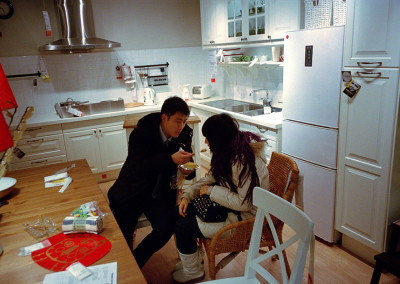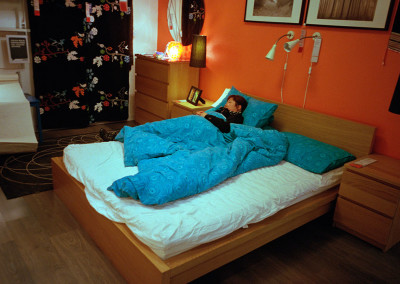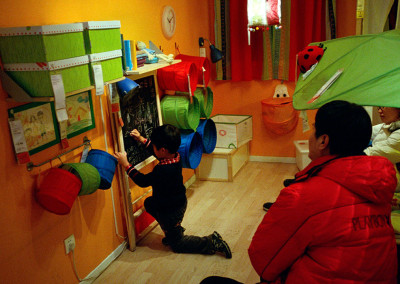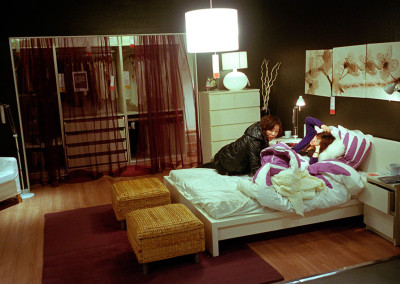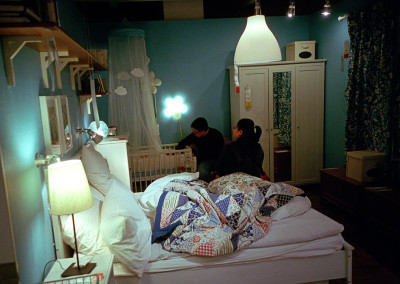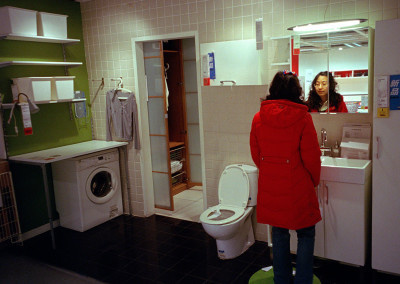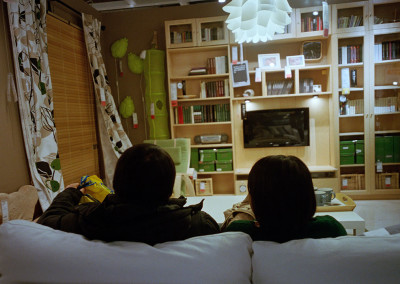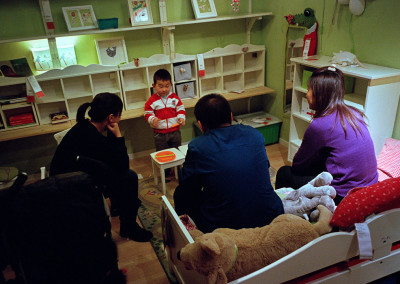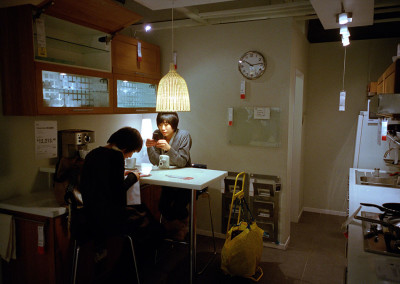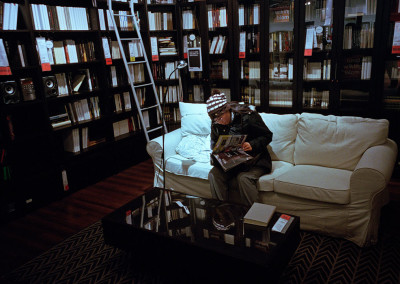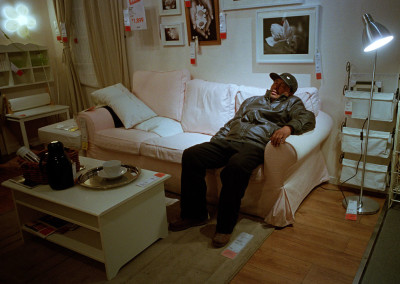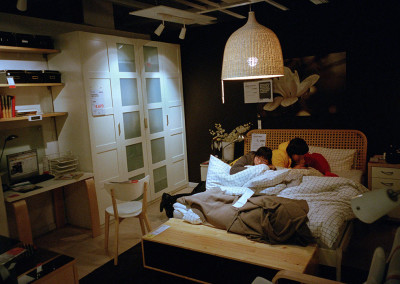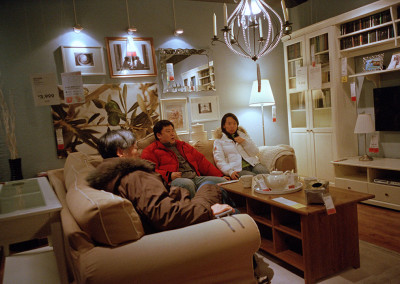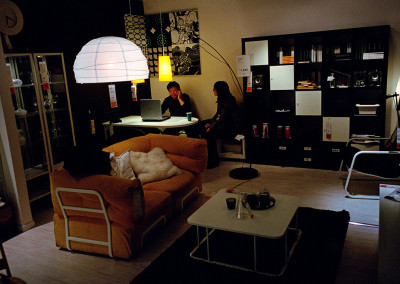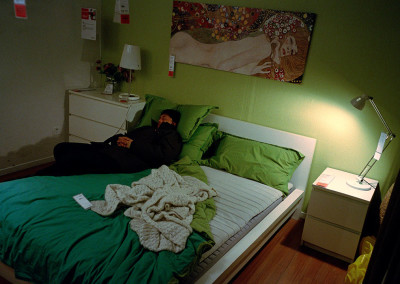As megablocks become the norm across Beijing, they not only drastically reshape the city but also the manner in which people live and consume, especially at home. Gone are the courtyards and small alleys of old Beijing where people largely lived on the streets and interacted in close-knit communities. Megablocks now encourage social atomization in their individual, western-style apartments. Unlike early Communist-era apartment blocks where families cooked in communal kitchens and even in the hallway, the new megablocks provide indoor kitchens. One might go for years without ever meeting or knowing a neighbor. Global commerce quickly took notice. With China’s burgeoning consumer market in its sights, Ikea opened in Beijing what was at the time its single largest outlet in the world. Stimulated by the construction boom of megablocks and the increasingly materialistic nature of nouveau riche, the capital proved fertile ground for its economical but trendy furnishings. Ikea’s 42,000 square meter flagship store is now a magnet for Chinese consumers. Shoppers pack the isles to peruse a seemingly endless parade of products and the especially popular showrooms. The faux kitchens, bedrooms, living rooms and offices are wildly alluring amongst patrons who sometimes visit just to spend a leisurely afternoon lounging on the plush furniture with no real intention of making a purchase. Desirous looks and gestures abound as they enact little domestic dramas while settling into couches, armchairs, and beds. Although catering to nonpaying customers may appear like wasted effort, Ikea tolerates their presence. Even though they might not buy anything now, they will in the future. Ikea looks forward to satisfying their nascent materialistic urges spawned by newfound nesting habits. Each photograph is thus framed to suspend the customers in their appropriated Ikea environments, as if they were in their own homes. The patrons easily overlook these details as the novel surroundings goad and shape their notions of what constitutes a residence.
RIGHT AT HOME – BEIJING IKEA LIFESTYLES
